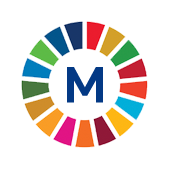 1.2.2 People at risk of poverty or social exclusion by age and sex (EU 2030 strategy)MetadataPeriod: AnnualYear: 2025 |
 1.2.2 People at risk of poverty or social exclusion by age and sex (EU 2030 strategy)MetadataPeriod: AnnualYear: 2025 |
| METADATA |
| Indicator information |
| Definition and methodology |
| Data source type and data collection method |
| Notes |
| ID of global indicator |
| Metadata update |
| Global metadata |
| Indicator information | Top |
| Indicator | |
1.2.2 People at risk of poverty or social exclusion by age and sex (EU 2030 strategy) | |
| Global indicator name | |
1.2.2 Proportion of men, women and children of all ages living in poverty in all its dimensions according to national definitions | |
| Target | |
1.2 By 2030, reduce at least by half the proportion of men, women and children of all ages living in poverty in all its dimensions according to national definitions | |
| Goal | |
Goal 1. End poverty in all its forms everywhere | |
| Definition and methodology | Top |
| Definition | |
At-risk-of poverty or social exclusion rate (AROPE) shows the share of individuals who are at risk of poverty or are severely materially and socially deprived or live in households with very low work intensity. | |
| Methodological explanations | |
Individuals who are at risk of poverty are those whose equivalised disposable income is below the at-risk-of-poverty threshold (relative poverty line).
Severely materially and socially deprived persons have living conditions severely constrained by a lack of resources. They experience at least 7 out of 13 following deprivations items: 1. inability of the household to keep its home adequately warm,
Very low work intensity refers to households whose working-age members worked less than 20% of the total number of months they could have possibly worked during a referent period.
Equivalised disposable income is the total household disposable income evenly distributed among the members of the household according to the modified OECD (Organisation for Economic Co-operation and Development) equivalence scale. In accordance with this scale, first adult member of the household receives the value of 1, other adults aged 14 and over 0.5, and children under the age of 14, 0.3. Household income does not include income in kind.
Тhe at-risk-of-poverty threshold (relative poverty line) represents 60% of the median equivalised disposable income. | |
| Method of calculation | |
This indicator corresponds to the sum of persons who are: at risk of poverty after social transfers, severely materially and socialy deprived or living in households with very low work intensity. Persons are counted only once even if they are affected by more than one of these phenomena. | |
| Unit of measure | |
% | |
| Available disaggregation | |
Gender, Age groups | |
| Territorial level | |
Republic of Serbia | |
| Data source type and data collection method | Top |
| Data source | |
Statistical Office of the Republic of Serbia | |
| Periodicity of data collection | |
Annual | |
| Notes | Top |
| ID of global indicator | Top |
C010202 | |
| Metadata update | Top |
| 26/6/2025 | |
| Global metadata | Top |
https://unstats.un.org/sdgs/metadata/files/Metadata-01-02-02.pdf | |